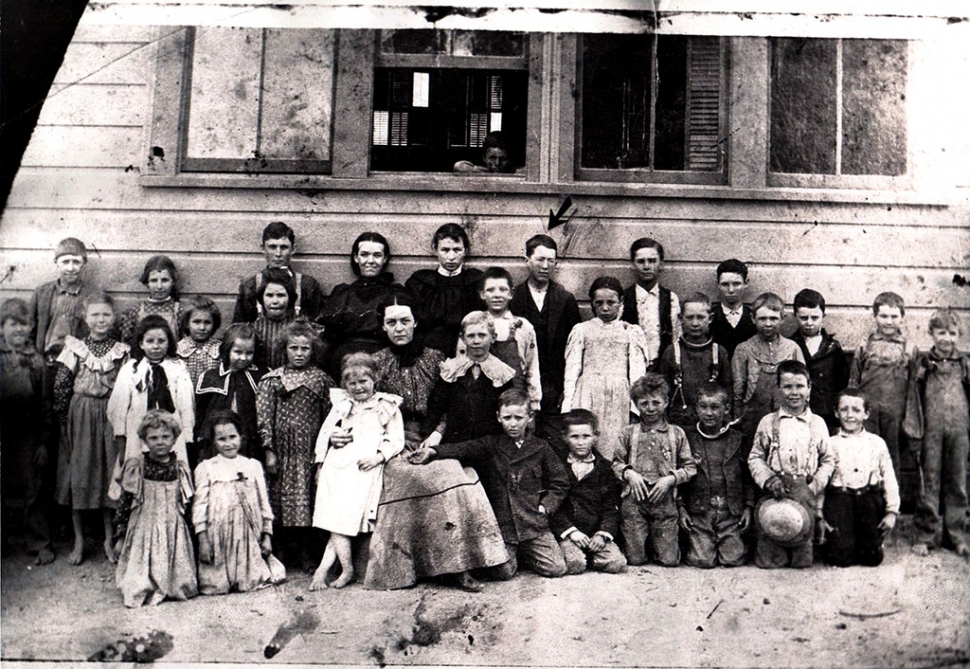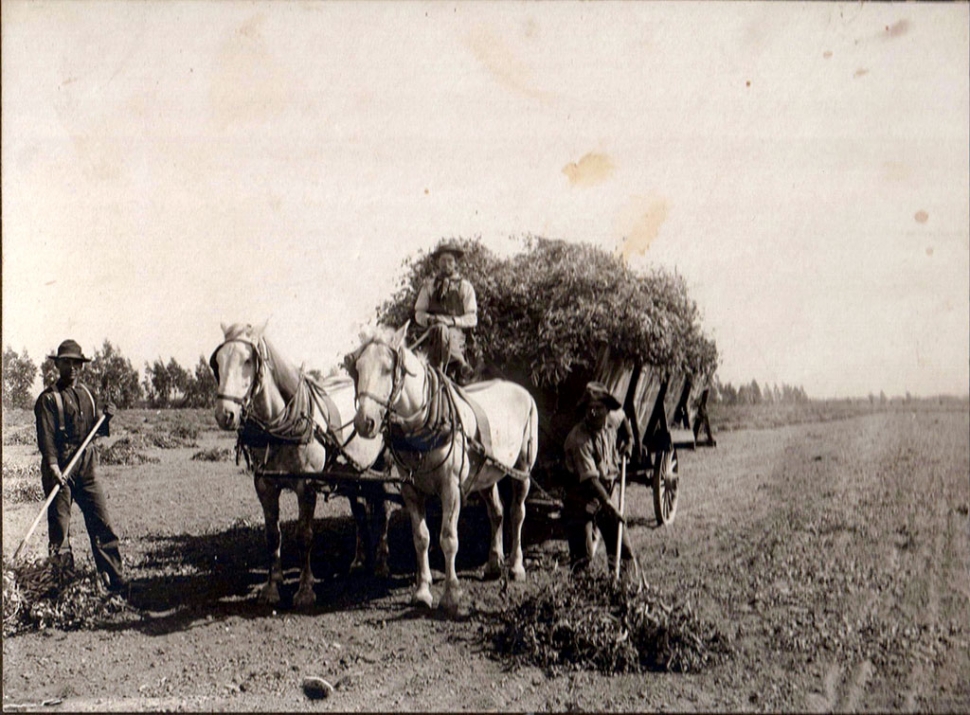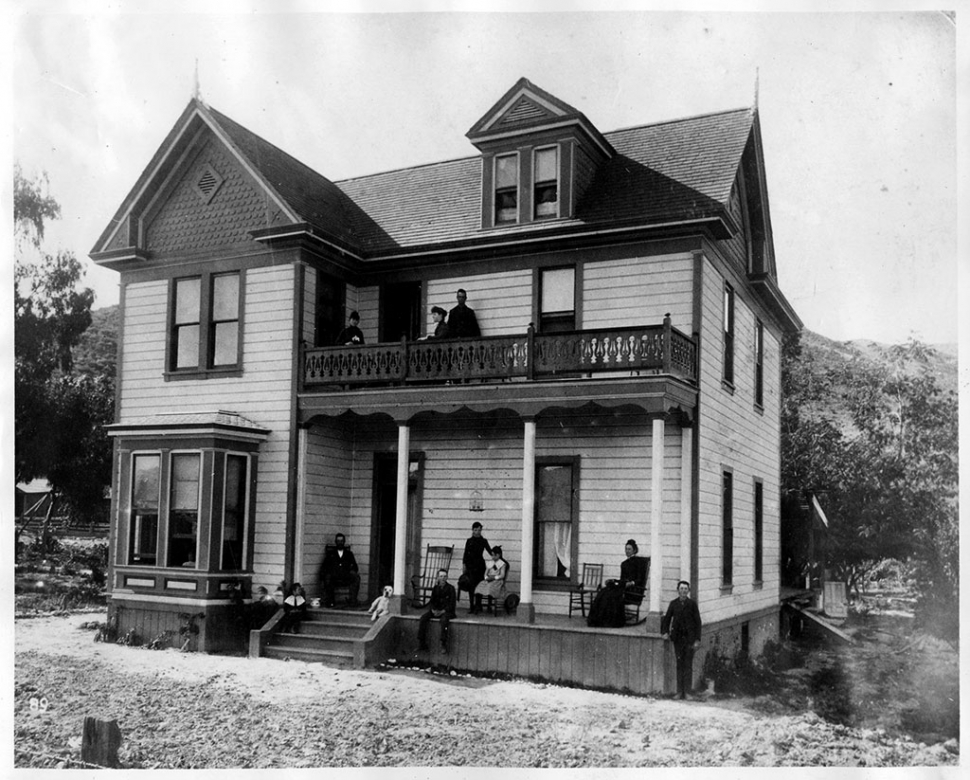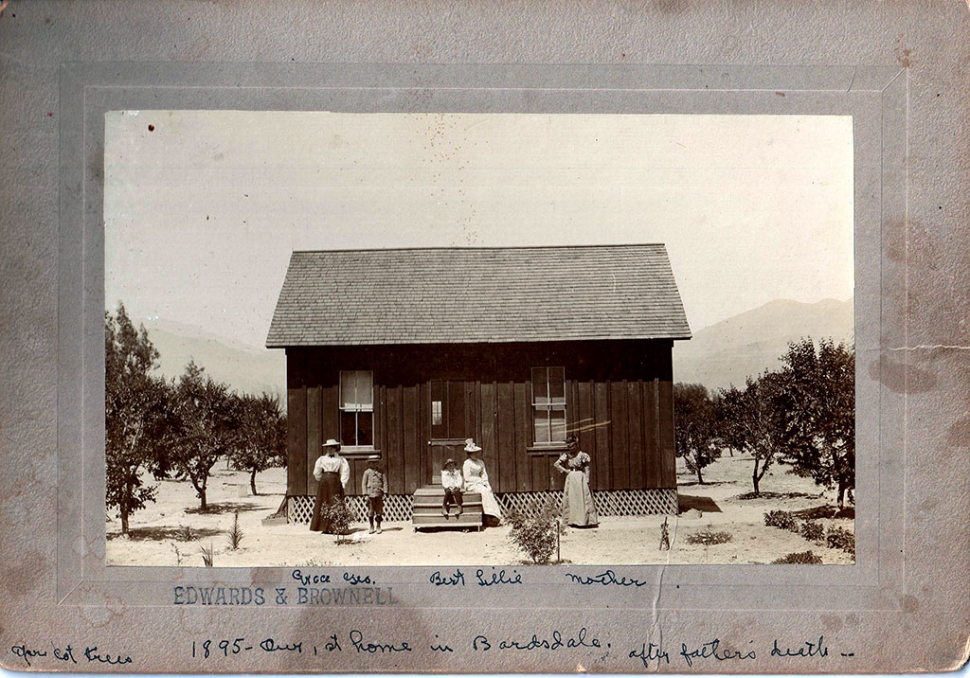|
Part Two: Excerpt on The History of Bardsdale
 Zuleika Guiberson with her Willow Grove School Class of 1898. Photos courtesy Fillmore Historical Museum. By Anonymous — Wednesday, July 1st, 2020
   Story courtesy Fillmore Historical Museum Mrs. George King, known as Hattie, was born Harriett Busick in El Dorado, California, the daughter of a pony express rider. She came to Bardsdale at age 12 to live with her aunt, Mrs. S. A. Guiberson. She married George King, who was property agent for Thomas Bard, in 1896. Together they had two daughters, Ona and Agnes. Mrs. King had many interests but two were the Women’s Christian Temperance Union (when she registered to vote it was as a member of the Temperance Party while her husband was a registered Republican), and education. She financed the construction of building that was used for the first high school in Fillmore while the permanent building was completed. This is an excerpt from a History of Bardsdale Mrs. King wrote in either 1915 or 1922. If you would like to read the entire history, here’s the link to the Museum’s website. Part 2: . . . One of the first projects [Royce] Surdam entered into was the development, or the bringing of water, onto the tract for irrigation. The water was taken out of the river above Mr. G. W. Edwards' and brought through wooden flumes and ditch, totaling about ten miles and said to have cost $8,000. [The] first crop raised after Bardsdale town site was laid out was potatoes, yielding, it was said, 75 -150 sacks per acre. Corn was also raised and [it] yielded surprisingly. There was an abundance of water, and everyone was thrifty and prosperous. One of the first new buildings was the home of Grandma Robertson (now the resident of [the] Robertson sisters). Later the church and school were combined. The now German church, also the German parsonage, the home of Mr. Klages (now the home of Dare), later the Robertson home (now the Walker home) -- on and on, the houses were built. . . The early colonists were about equally divided between German and English speaking people. Germans from the first maintained their church. The two denominations, of course, held their meetings at different times in the same building. Sunday school was held twice a day, and the church building was occupied most all the day Sunday. [The building that was the German Church is now a private home on Owens Street in Bardsdale.] . . . In the Spring of 1889, Mr. Surdam, with the help [from the] residents, got up a May day picnic and barbecue. The picnic was held a little to the left of Will Wileman's place, or on the Grandma Robertson place, under a beautiful live oak grove. There were 1,500 people in attendance, and it was estimated that a thousand came from other parts of the county. A special excursion was run from Ventura. All the teams in the county were engaged to bring the people from Fillmore. The car of state led the procession and the small boys and men followed behind on foot. In the car of state all the young girls in the county rode dressed in white dresses in blue and white trimmings. The May queen, Miss Zulieka Guiberson, seated on her throne. The whole exercise of dancing around the maypole and the crowning of the queen was gone through with by the young maidens. Santa Paula and Bardsdale were to furnish the program jointly. Mr. S. A. Guiberson, then the singing school teacher, was to train the singers of Bardsdale. R. G. Surdam was anxious that Bardsdale should not be outdone and did everything possibly to help in the program. Bardsdale's quartet sang their very best. Santa Paula had a quartet and they did their best. When Bardsdale took part, all this end of the county cheered and clapped. Likewise, when Santa Paula took part, the people did the same. There was great enthusiasm in those days. When the meat was done, Ari Hoper went through the crowd and called out in [a] tone loud enough to be heard a mile, "the meat is now ready." This man, in his younger days, was preacher, but the people never wanted him to preach excepting at camp meetings as they could not stand the noise. This picnic was a great success, and it cost R. G. Surdam, a thousand dollar [sic] or more besides what he gave the people. . . . |
